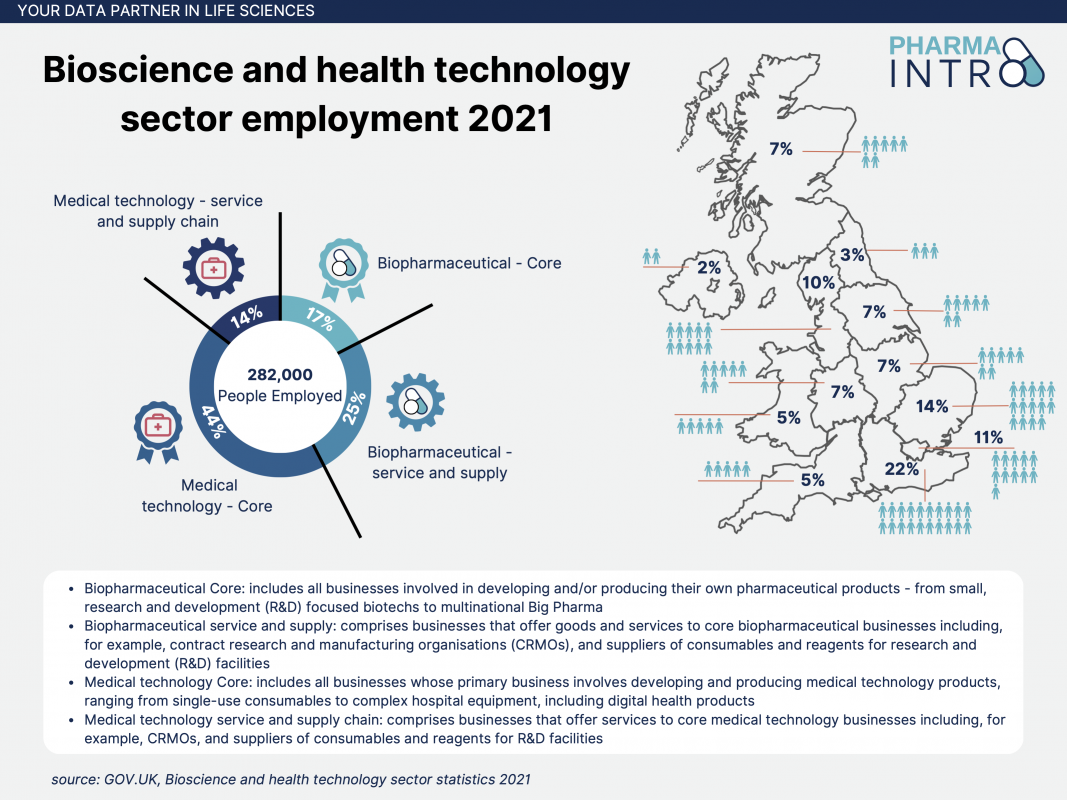Introduction:
The life science industry in the United Kingdom has emerged as a vibrant and expanding sector, contributing significantly to the country’s economy and scientific advancements. Alongside its rapid growth, the industry has seen notable shifts in employment patterns and demographic composition. This article explores the employment landscape and demographic trends within the UK’s thriving life science industry, highlighting its diversity, opportunities, and future prospects.
Employment Growth:
The life science sector has experienced remarkable employment growth in recent years, driven by technological advancements, research breakthroughs, and increased investment. The industry encompasses a wide range of fields, including pharmaceuticals, biotechnology, medical devices, research, and development. The demand for skilled professionals across these domains continues to rise, offering diverse career opportunities for individuals with varying expertise and qualifications.
Job Roles and Specializations:
The UK life science industry encompasses a myriad of specialized job roles, each contributing to the sector’s overall success. These roles span from research scientists, clinical researchers, and data analysts to regulatory affairs specialists, manufacturing experts, and sales representatives. The industry’s multidisciplinary nature ensures a broad spectrum of career paths, accommodating individuals with diverse educational backgrounds, from life sciences and medicine to engineering, IT, and business administration.
Collaboration and Innovation:
One of the defining characteristics of the UK life science industry is its collaborative and innovative nature. It thrives on partnerships between academia, research institutions, and private companies, fostering an environment conducive to groundbreaking discoveries and scientific advancements. Collaborative efforts enable knowledge exchange, cross-pollination of ideas, and the translation of research into tangible solutions, propelling the industry forward and attracting top talent from around the globe.
Regional Distribution:
While the life science industry is present throughout the UK, certain regions have emerged as prominent hubs for life science activities. The “Golden Triangle” comprising London, Oxford, and Cambridge stands out as a prominent cluster of research institutions, universities, and biotech companies. Other regions, including Manchester, Scotland, and the Midlands, also boast a significant life science presence, contributing to regional economic growth and employment opportunities.
Demographic Diversity:
The UK life science industry prides itself on its diverse and inclusive workforce. It attracts professionals from different backgrounds, ethnicities, and nationalities, creating a rich tapestry of talents and perspectives. The industry actively promotes diversity and inclusion, recognizing that diverse teams drive innovation, problem-solving, and better decision-making. Efforts are being made to ensure equal opportunities for underrepresented groups and bridge gender gaps within senior leadership positions.
Skills and Training:
The dynamic nature of the life science industry necessitates a commitment to continuous learning and upskilling. Employers and educational institutions collaborate to provide targeted training programs and professional development opportunities to meet the evolving demands of the sector. These initiatives help nurture a skilled workforce capable of driving innovation, adapting to technological advancements, and addressing the industry’s ever-changing challenges.
Future Outlook:
The future of the UK life science industry looks promising, with substantial government support, investment, and a favorable regulatory environment. The country’s commitment to research and development, coupled with strong collaborations and access to global markets, positions it as a hub for life science innovation. The industry is poised for continued growth, attracting talent, fostering entrepreneurship, and contributing to economic prosperity.
Conclusion:
The employment and demographic landscape within the UK life science industry reflect a dynamic, diverse, and thriving sector. With expanding opportunities, collaborative networks, and a commitment to innovation, the industry offers a range of fulfilling careers for professionals across various disciplines. As the sector continues to evolve, it remains at the forefront of scientific advancements, contributing to the betterment of healthcare, society, and the economy as a whole.

